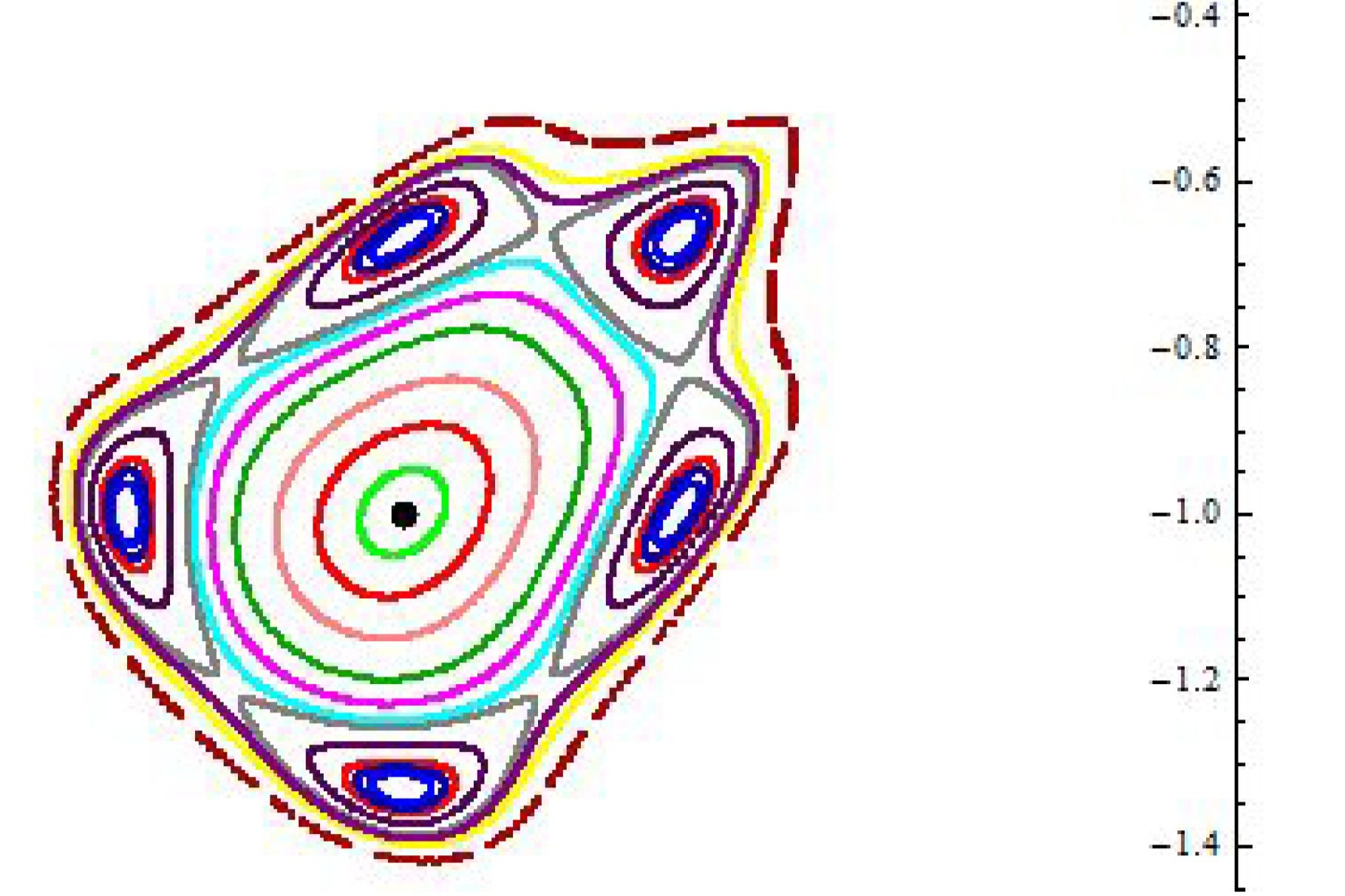
What is the Kolmogorov-Arnold-Moser (KAM) Theory? The Kolmogorov-Arnold-Moser Theory, often called KAM Theory, is a fundamental concept in dynamical systems and chaos theory. It explains how certain systems can remain stable even when subjected to small disturbances. Named after mathematicians Andrey Kolmogorov, Vladimir Arnold, and Jürgen Moser, this theory has profound implications in fields like astronomy, physics, and engineering. It shows that not all systems descend into chaos; some retain a predictable structure. This stability is crucial for understanding planetary motion, satellite trajectories, and even weather patterns. Dive into these 28 fascinating facts to grasp the essence of KAM Theory and its real-world applications.
What is Kolmogorov-Arnold-Moser Theory?
Kolmogorov-Arnold-Moser (KAM) Theory is a cornerstone in the study of dynamical systems. It addresses the stability of motion in Hamiltonian systems, which are mathematical models used to describe physical systems. Let's dive into some fascinating facts about this theory.
-
Origin: The theory is named after three mathematicians: Andrey Kolmogorov, Vladimir Arnold, and Jürgen Moser.
-
Hamiltonian Systems: KAM Theory specifically deals with Hamiltonian systems, which are used to describe the evolution of a system over time.
-
Stability: It explores the stability of quasi-periodic orbits in these systems.
-
Perturbations: The theory examines how small changes (perturbations) affect the stability of these orbits.
-
Kolmogorov's Contribution: Andrey Kolmogorov first introduced the concept in 1954.
-
Arnold's Extension: Vladimir Arnold expanded on Kolmogorov's work in the 1960s, providing more detailed proofs.
-
Moser's Refinement: Jürgen Moser further refined the theory, making it more accessible and applicable.
-
Quasi-Periodic Orbits: These are orbits that repeat over time but not in a simple, periodic manner.
-
Invariant Tori: KAM Theory shows that many quasi-periodic orbits lie on structures called invariant tori.
-
Dimensionality: The theory is particularly concerned with systems that have more than two degrees of freedom.
Applications of KAM Theory
KAM Theory isn't just a theoretical construct; it has practical applications in various fields. Here are some areas where it plays a crucial role.
-
Astronomy: Helps in understanding the stability of planetary orbits.
-
Physics: Used in the study of plasma confinement in fusion reactors.
-
Engineering: Assists in the design of stable mechanical systems.
-
Economics: Applied in the modeling of economic cycles and market stability.
-
Biology: Helps in understanding the dynamics of biological systems.
-
Meteorology: Used in the study of atmospheric dynamics and weather prediction.
-
Robotics: Assists in the design of stable robotic systems.
-
Space Missions: Helps in planning stable trajectories for spacecraft.
Mathematical Foundations
The mathematical underpinnings of KAM Theory are both intricate and fascinating. Here are some key mathematical concepts involved.
-
Differential Equations: The theory relies heavily on the study of differential equations.
-
Perturbation Theory: This branch of mathematics deals with small changes in systems and is crucial for KAM Theory.
-
Fourier Series: Used to represent quasi-periodic functions.
-
Topology: The study of geometric properties and spatial relations unaffected by continuous changes.
-
Measure Theory: Helps in understanding the "size" of sets in a mathematical sense.
-
Symplectic Geometry: A branch of mathematics that studies spaces with a symplectic structure, crucial for Hamiltonian systems.
Historical Impact
KAM Theory has had a significant impact on the field of dynamical systems and beyond. Here are some historical milestones.
-
1954: Kolmogorov presents his initial findings.
-
1963: Arnold publishes his extension of Kolmogorov's work.
-
1962: Moser publishes his refinements, making the theory more accessible.
-
Nobel Prize: While none of the contributors received a Nobel Prize, their work has been highly influential in various scientific fields.
The Last Word on KAM Theory
KAM Theory, or Kolmogorov-Arnold-Moser Theory, has reshaped our understanding of dynamical systems. It shows how small changes can lead to big differences in system behavior. This theory isn't just for mathematicians; it has practical uses in astronomy, physics, and even engineering. By explaining how systems can stay stable or become chaotic, KAM Theory helps us predict and manage complex systems better.
Understanding KAM Theory can be a game-changer. It gives us tools to tackle real-world problems, from predicting planetary orbits to designing more reliable machines. So, next time you hear about chaos or stability in systems, remember the impact of KAM Theory. It's a cornerstone of modern science, proving that even the smallest details can have a huge impact.
Was this page helpful?
Our commitment to delivering trustworthy and engaging content is at the heart of what we do. Each fact on our site is contributed by real users like you, bringing a wealth of diverse insights and information. To ensure the highest standards of accuracy and reliability, our dedicated editors meticulously review each submission. This process guarantees that the facts we share are not only fascinating but also credible. Trust in our commitment to quality and authenticity as you explore and learn with us.
